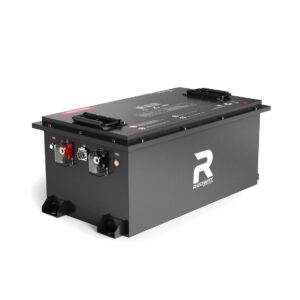How Can Off-Grid RV Power Solutions Reduce Reliance on Traditional Energy Sources?
Off-grid RV power solutions like solar panels, lithium batteries, and inverters enable self-sufficient energy generation and storage, eliminating dependence on shore power or generators. These systems optimize renewable resources, reduce carbon footprints, and provide consistent electricity in remote locations through integrated energy management strategies.
How Do Solar Panels Enhance Off-Grid RV Energy Independence?
Solar panels convert sunlight into electricity through photovoltaic cells, providing renewable energy for RVs. Modern flexible solar arrays can generate 300-400 watts daily, paired with MPPT charge controllers for 20-30% efficiency gains. Systems often include tilt mounts and sun-tracking software to maximize output during low-light conditions.

What Makes Lithium Batteries Superior for Off-Grid RV Power Storage?
Lithium iron phosphate (LiFePO4) batteries offer 3,000-5,000 cycles at 80% depth of discharge versus lead-acid’s 500 cycles. Their 99% charge efficiency and 50% weight reduction enable compact installations. Built-in battery management systems (BMS) prevent overheating and balance cells for consistent performance in temperatures from -4°F to 140°F.
Advanced lithium batteries now feature modular designs allowing users to stack units for customized capacity. Thermal management systems using phase-change materials maintain optimal operating temperatures, reducing performance degradation in extreme climates. Unlike lead-acid batteries that lose capacity when partially charged, lithium variants maintain stable voltage outputs throughout discharge cycles.
| Feature | Lithium | Lead-Acid |
|---|---|---|
| Cycle Life | 3,000-5,000 | 300-500 |
| Weight (100Ah) | 31 lbs | 60 lbs |
| Charge Time | 2-4 hours | 8-10 hours |
Which Inverter Technologies Optimize Off-Grid RV Power Conversion?
Pure sine wave inverters with 90-95% efficiency convert DC to AC power without harmonic distortion. Smart inverters like Victron MultiPlus-II integrate energy storage, grid-shore switching, and load balancing. Hybrid models prioritize solar input while supplementing with generators during peak demand, reducing fuel consumption by 40-60%.
Why Are Energy Management Systems Critical for Off-Grid RV Efficiency?
Integrated energy management systems (EMS) monitor consumption patterns and automatically adjust power flow. Advanced models like Truma iNet X control HVAC, lighting, and appliances through machine learning algorithms. Real-time load shedding prevents circuit overloads, while predictive analytics extend battery life by 15-20% through optimized charge cycles.
Modern EMS solutions incorporate weather forecasting integration, automatically pre-charging batteries before cloudy days. Wireless sensors track individual appliance usage, providing granular energy consumption data through mobile apps. Some systems even coordinate with campground power pedestals to dynamically blend solar and shore power, minimizing electricity costs during short stops.
How Do Induction Cooktops Revolutionize Off-Grid RV Kitchen Energy Use?
Induction cooktops use 50-60% less energy than propane stoves by directly heating cookware through electromagnetic fields. Models like Furrion Vision S2 deliver 1,800W power with precise temperature control. When paired with solar arrays, they eliminate propane dependency while reducing fire risks in mobile environments.
What Role Do Mobile Apps Play in Monitoring Off-Grid RV Power Systems?
Bluetooth/Wi-Fi enabled apps like VictronConnect and Renogy ONE provide real-time monitoring of solar input, battery levels, and consumption. Users receive push notifications for maintenance alerts and system diagnostics. Cloud-based platforms enable remote troubleshooting, firmware updates, and energy usage pattern analysis across multiple devices.
Can Off-Grid RV Power Solutions Integrate With Community Energy Resources?
Emerging microgrid technologies allow RVs to share excess solar power through vehicle-to-grid (V2G) systems. Campgrounds with renewable infrastructure enable peer-to-peer energy trading via blockchain platforms. These networks create resilient power communities while generating income through decentralized energy markets.
“Modern off-grid systems now achieve 98% energy autonomy through AI-driven predictive load management. Our latest lithium batteries with graphene anodes charge fully in 90 minutes, while nano-coated solar panels maintain 85% efficiency in snow. The future lies in integrated ecosystems where RVs function as mobile power stations during natural disasters.”
FAQ
- How long can an RV run off-grid using solar power?
- A 600W solar system with 400Ah lithium batteries typically powers lights, fridge, and devices for 3-5 days without sun. Energy-efficient RVs with thermal insulation can extend this to 7+ days.
- What’s the cost difference between lead-acid and lithium batteries?
- While lithium batteries cost 2-3x more upfront ($900-$1,500 vs $300-$600), their 8-10 year lifespan versus 2-3 years for lead-acid results in 60% lower lifetime costs.
- Can I use wind turbines for off-grid RV power?
- Micro wind turbines (400-800W) supplement solar in windy regions, but require 12+ mph steady winds. Hybrid systems with solar/wind increase reliability by 35%, though turbines add 50-80 lbs and require mounting infrastructure.
